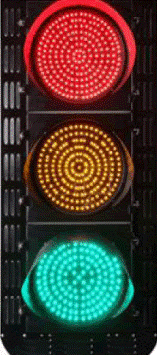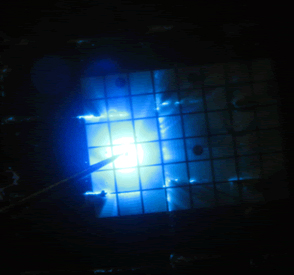
Solid-state electronics has been transforming our lives for many decades by bringing us increasingly small, cheap and efficient devices and appliances. Our modern life-styles have come to be defined by our access to an increasingly wide assortment of technologically advanced equipment for personal and group use. From smart phones to personal music players and from satellite navigators to tablet computers the benefits of modern electronics are all around us. In this continuing tradition, solid-state lighting now seems set to revolutionise the way we light our surroundings – indoors and outdoors. Its impact is already being felt globally and in the coming years it will further entrench its position as one of the defining technologies of the twenty-first century.

Lighting technology has changed remarkably little since its inception more than a hundred years ago. We still illuminate our homes and offices with lamps that bear a striking resemblance to Thomas Edison’s invention in the late nineteenth century. Indeed the basic design of incandescent light bulbs has remained essentially the same over the years and with that their efficiencies have also changed very little. The development of tungsten-halogen lamps in the nineteen-fifties did raise the efficiency somewhat but it still remained woefully low. The later development of fluorescent lighting resulted in a big improvement in efficiency but even that is now considered insufficient in our increasingly energy-conscious world. Moreover, their use of toxic and environmentally hazardous mercury has always remained a cause for concern. The emergence of highly efficient diode-based solid-state lighting over the past decade has, therefore, been widely welcomed and acknowledged as the next logical step in the evolution of lighting technology.
Solid-state light emitters were invented in the nineteen sixties as semiconductor pn-junction diodes capable of emitting coloured light. These light-emitting diodes (LEDs) were made from materials such as gallium arsenide and gallium arsenide phosphide. For many years, LEDs only served as small indicator lights for electronic equipment. They were ubiquitous in everything from portable transistor radios to televisions and telephones. Epoxy-packaged low-power LEDs are still around in essentially the same form in which these devices have been used for several decades. In later years, LEDs were also used to build dot-matrix displays that found particular favour in countries of the far-east. Even today a visitor to such places as Hong Kong, Singapore or Tokyo cannot escape the overwhelming concentration of advertising LED bill boards in city centres. Traffic light is another application where LEDs made an early appearance. A typical LED-based traffic light utilising clusters of low-power red, amber and green LEDs is shown in figure 1.

LEDs were traditionally available in most colours except blue which made it impossible to build full-colour displays using a combination of red, green and blue light emitters. A blue-emitting LED was a long sought after goal and, therefore, it caused much excitement when a practical blue LED was reported by a researcher at a small Japanese electronics company. Figure 2 shows an LED wafer with many individual blue LEDs, undergoing testing on an assembly line. Shuji Nakamura’s invention of the blue LED at Nichia Corporation resulted in the proliferation of LEDs in all kinds of applications. Its development also gave rise to the white LED which consists of a blue LED chip coated with a light-
emitting material called a phosphor. The phosphor gets excited by the blue light from the LED chip and converts a large amount of the blue light into yellow light. The resulting light – a combination of yellow emission from the phosphor and the residual un-converted blue light – appears white to our eyes. The availability of white LEDs soon started people thinking about the possibility of using these devices for illumination purposes.
Early LEDs were low-power devices, capable of running at no more than a quarter of a watt of power dissipation. While this was adequate for use as indicator devices and even for multi-colour dot-matrix displays, space lighting demanded higher power devices. This was a formidable problem once because high power LEDs have to use larger chips that also produce much more heat than the tiny chips used in conventional low-power LEDs.






